Did you know that your home's foundation could be secretly at war with the magnificent oak tree in your yard? It’s a silent battle, and the tree might just be winning! Homeowners are oblivious to what lies beneath…
With rising real estate costs and climate change impacting landscapes, understanding tree root damage has never been more vital. Are we unknowingly sitting on the ticking time bombs of towering greenery?
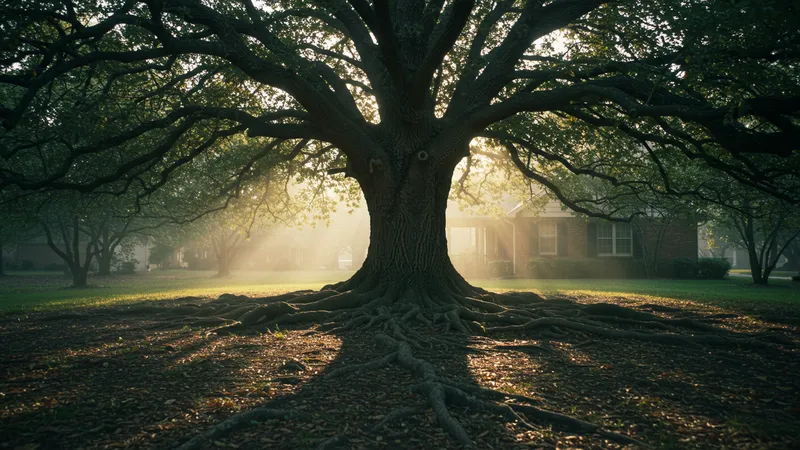
Most people think of trees as benign sources of shade and beauty, enhancing the aesthetics and value of our homes. However, beneath every idyllic tree canopy lies a network of roots that can extend far beyond the visible borders. These roots silently grow and can cause structural damage to home foundations, leading to costly repairs and even safety hazards. You'd be surprised at how often homes are damaged this way, even in the most meticulously planned suburban developments. But that’s not even the wildest part…
Even small, decorative plants can pose significant threats to a home’s structure. Often, landscapers focus on the immediate beauty without considering future subterranean expansion. Insurance agencies have begun accounting for tree root damage in risk assessments, given that over 30% of foundation claims involve roots. But did you know that mitigations exist that can stealthily curb root expansion? Yet, what happens next shocked even the experts…
When homeowners overlook tree root intrusions, the consequences can be catastrophic. Take, for example, a quaint colonial home nestled in a leafy neighborhood. Over the years, the roots of a mighty sycamore tree slowly heaved the foundation upwards, creating a slope so subtle it went unnoticed. Over time, this resulted in cracked walls and uneven floors, making the home a nightmare to live in. It’s baffling how something so majestic on the surface could wreak such havoc underneath. But there’s more beneath the surface to explore…
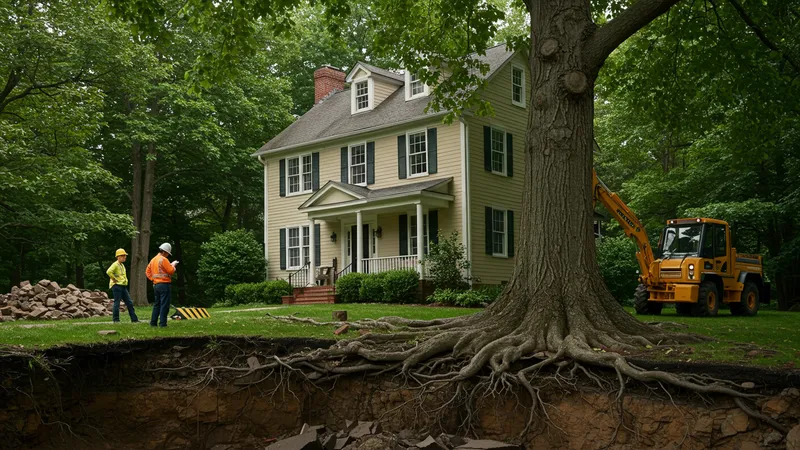
According to structural engineers, resolving these issues post-factum is no small feat. Excavation, root barrier installation, and foundation repair can run into tens of thousands of dollars, yet some homeowners choose to bulldoze trees entirely. This drastic measure is often their last resort, especially when faced with exorbitant quotes that can threaten to uproot their financial stability. Wouldn't you want to know the alternatives that don’t involve a chainsaw?
Interestingly, some adventurous solutions lie in advanced landscaping techniques. Specialized root barriers made from materials such as copper or heavy-duty plastic are gaining popularity. When professionally installed, these barriers can prevent roots from encroaching on restricted zones while keeping your trees happy and healthy. Yet, there’s an even more fascinating cultural shift in how we deal with trees—keep reading to find out more.
Communities are coming together to defend nature while ensuring home safety through educational workshops and expert consultations. People are breaking away from the long-held myth that removing a tree is the only viable solution. But there’s one more twist: networks of like-minded homeowners are using collective bargaining to afford these preventative measures, essentially turning a collective root problem into a community strength.
Hidden beneath the artful foliage of your average neighborhood tree is a stunningly complex root system that defies logic. A fascinating study conducted by urban ecologists has uncovered that certain tree roots can grow up to three times the height of the tree itself! This means that a 20-foot tree could potentially have roots extending 60 feet below ground, intertwining with all sorts of subterranean structures. This surprising revelation has homeowners scratching their heads—but what about those neighbouring trees?
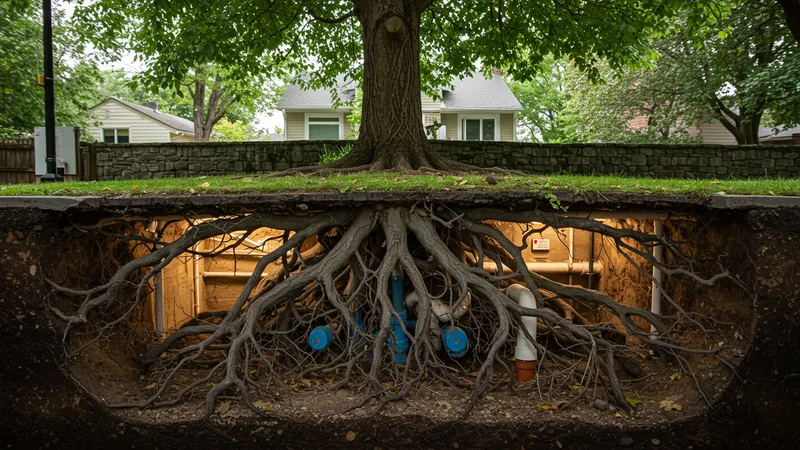
The resilience of tree roots is another facet that often leaves many flabbergasted. Root systems can reroute and regenerate even when damaged, preventing nothing short of woodland-level deforestation. Innovative arborists are experimenting with 'root pruning' to control this growth – a complex process that requires balancing the health of the tree with the safety of infrastructure. It’s a delicate, and often lines-blurring art.
Landowners are now more informed than ever thanks to research indicating the importance of specific tree species in dense urban areas. Certain tree varieties are far better suited to proximity with buildings due to root growth patterns; urban planners have responded to this by recommending species like dogwoods and crabapples. Yet, neglected knowledge about which trees to favor can prevent significant headaches down the road. Imagine being able to plan your landscape, knowing it's harmony at its best!
For the informed homeowner, this scientific knowledge offers both a blessing and a burden. While understanding root behavior can guide our decisions, it also introduces the ethical conundrum of nurturing nature while balancing humanity’s urban expansion. So what’s a homeowner to do to maintain this balance, yet remain safe from the hidden dangers below?
When trees cause significant damage, the issue isn't just physical—it often spirals into complicated legal battles. Homeownership loves its surprises and for some unlucky souls, a tree root has been cause enough to drag neighbors into small claims court! Yes, disputes about whose tree is responsible for the destruction is a common conundrum in communities. One case even reported a settlement over $50,000 for property damages. And that's just where the legal weeds begin…
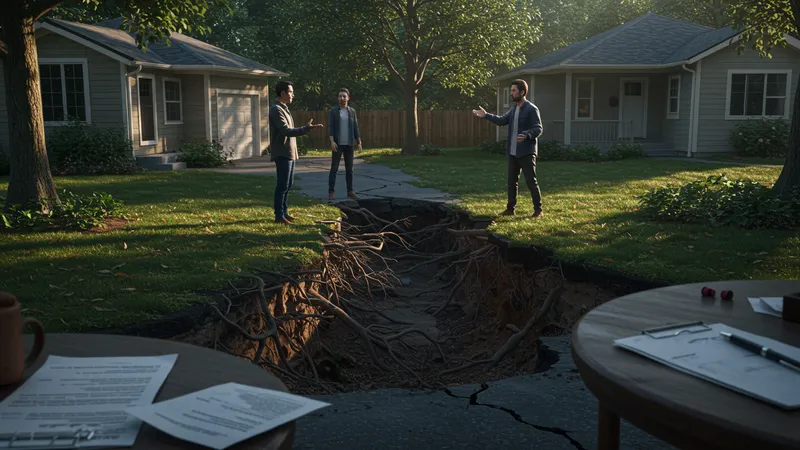
Did you know that there are jurisdictions with specific mandates about tree maintenance and root damage liabilities? Well, some counties assign full financial responsibility to the tree’s owner, while others require joint accountability between neighbors. It's a legal landscape as gnarly as the roots themselves. The early birds savvy to their regional laws are a step ahead; wouldn’t you like to be one of them?
To mitigate against future litigation, lawyers recommend clear communication between neighbors about potential tree threats. Homeowners are getting into the habit of documenting situations with regular photographs of tree growth and property conditions. When push comes to shove, this simple preventive measure can sway courtroom opinions. But here's where your rights can work for you…
Luckily, mediation services are growing as a common recourse, offering a peaceful compromise before litigation becomes necessary. This service can prevent broken fences and even shattered friendships. As people seek new problem-solving tactics, creative solutions unfold. But the burning question remains: could the beauty of trees forge better bonds, rather than sever them?
The role of home insurance can’t be overstated, especially in the unpredictable world of tree-related damage. Alarmingly, many standard policies don't automatically cover repairs linked to tree roots. Homeowners might find themselves paying out-of-pocket when the roots of a beautiful elm tree wreak havoc on their basement. Yet, for those in the know, the remedy isn’t as obscure as it might seem...
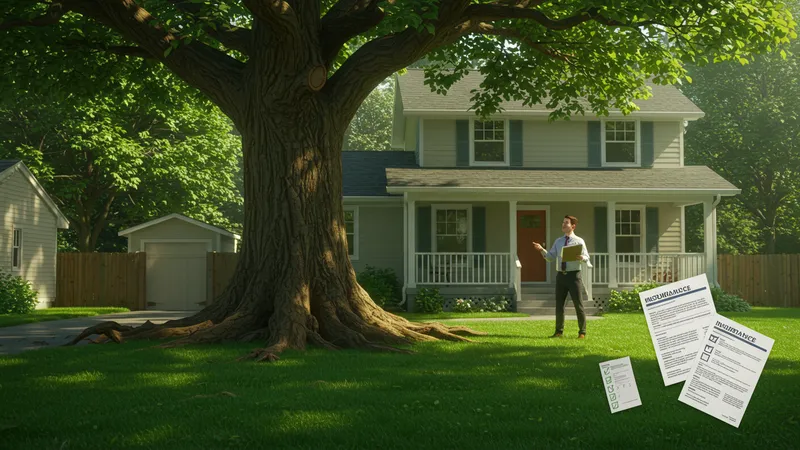
Increasingly, insurers are structuring special endorsements that provide coverage for damages not traditionally included in standard policies. These add-ons, however, come at a premium; weighing the cost against potential damage could mean the difference between financial safety and ruin. It's a new approach making waves among the risk-averse—yet who truly benefits most from this?
Indeed, proactive homeowners are leveraging these insurance policies by regularly inspecting potential problem areas and seeking dedicated coverage improvements where necessary. It’s a relatively small investment that can account for peace of mind, especially in regions prone to extensive root growth. Aren't you curious how small steps in policy understanding could save thousands?
In this evolving insurance landscape, clarity is key. Educating oneself on available options isn't just financially savvy—it's a necessity. Imagine being one step ahead in understanding these latent risks, your insurer ready to fight on your behalf when nature doesn’t cooperate. What does it take to ensure you’re adequately protected?
Innovation has finally reached the roots—literally. Today's homeowners have access to an arsenal of technologies aimed at mitigating tree root damage. Among these are ground-penetrating radars that provide impressively detailed root maps, allowing professionals to determine root paths without even breaking ground. It's technology at the root of problem-solving like never before—pun intended!
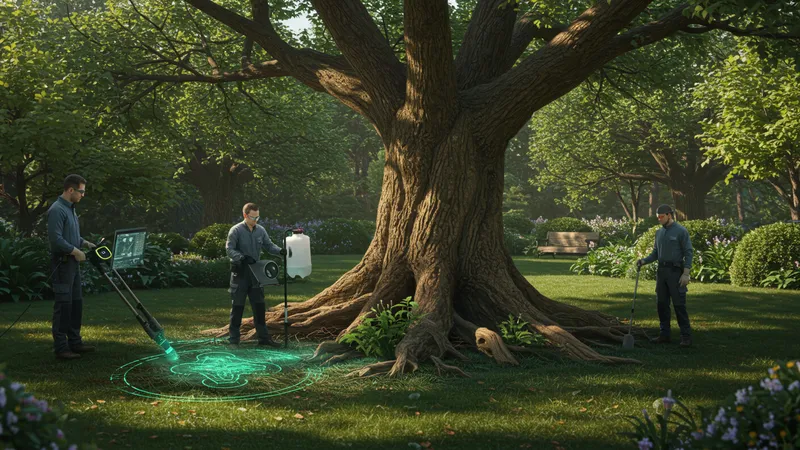
Even more astounding are the developments in chemical root growth inhibitors. These can halt or curtail root expansion without harming tree health. Used judiciously, they present a viable option over traditional root cutting which could seriously stress trees. What if you could keep your cherished tree and prevent damage all at once?
Technological mediation isn’t confined to prevention. Robotics now assist in effective root removal if needed, protecting both the property and the tree’s aesthetic value. As automation advances, homeowners may have even less to worry about, leaving machines to do the dirty work. Doesn’t it make you wonder what tomorrow’s tech could accomplish for today’s eco-challenges?
The implications of these innovations are vast, posing both challenges and opportunities as they redefine our approach to green spaces in domestic landscapes. Imagine having all this power at your fingertips while ensuring environmental responsibility. Could this be the innovative edge homeowners have been waiting for?
Preemptive landscaping is a paradigm shift that is reshaping property management. With strategic plant placement and species selection, the aim is to prevent root damage even before it begins. It’s an investment in the land of tomorrow for discerning homeowners today. And you might be wondering, what does this new greenwave truly entail?
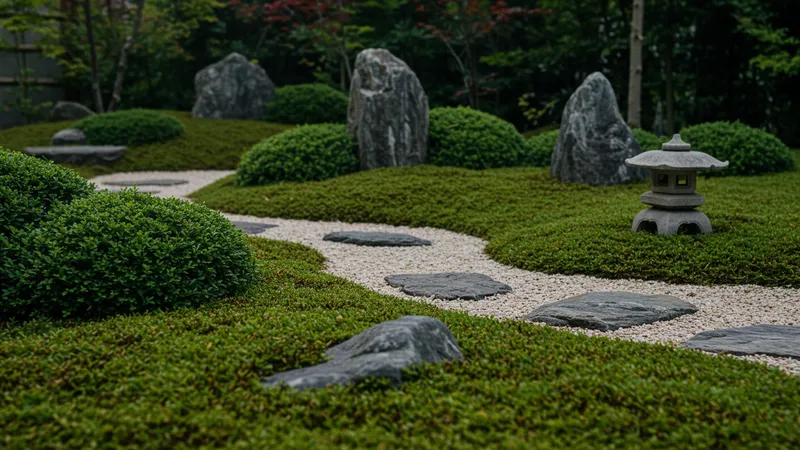
Inspired by traditional Japanese gardening, a minimalistic approach is gaining traction. By focusing on rock gardens and low-maintenance shrubs, homeowners can create serene environments without the threat of root intrusions. This notion goes beyond aesthetics—it's about creating sustainable and smart landscapes. Isn’t it intriguing how ancient wisdom now solves modern dilemmas?
Furthermore, innovative bioengineering projects are experimenting with genetically modified root systems designed to discourage aggressive spreading. While still in its infancy, this approach seeks to reconcile the wish for lush garden spaces with infrastructural security. Do modern homeowners hold the key to a landscape revolution?
Ultimately, eco-friendly design principles are merging with technological innovations to set the stage for gardens of the future. By transforming traditional ideas into progressive actions, there are now countless ways to fortify property value and natural beauty. Isn’t it high time to unearth these powerful solutions?
Tree root management isn't purely a technical issue; it immerses itself in the ethical domain of environmental conservation. Many home dwellers face dilemmas when the majestic oak poses a threat to familiar walls, thus initiating debates over trees' intrinsic value versus architectural preservation. How do we balance this delicate act?
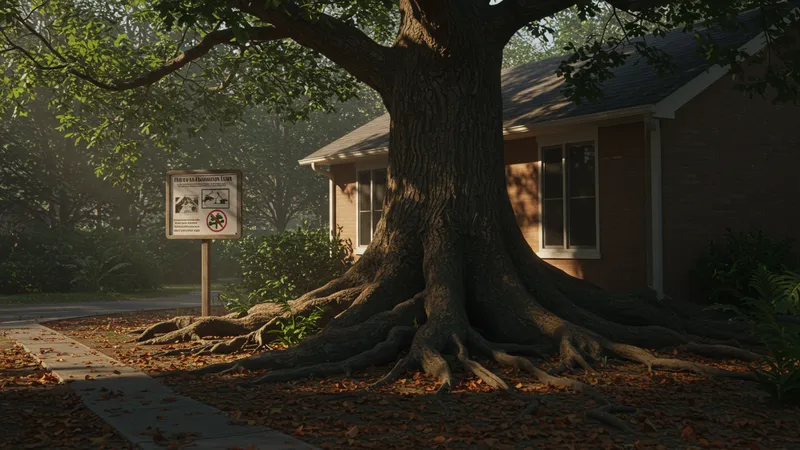
Municipalities have responded with laws aiming to protect both ecological stability and homeowners’ rights. These tree petitions allow residents to voice their concerns while seeking solutions beyond simple removal. It’s a more considerate path that asks us to reflect on the true cost of progress. Isn’t social engagement bringing about a positive shift?
Meanwhile, environmentalists advocate for designing urban spaces that can coexist harmoniously with mature trees. Such endeavors not only shield structures from potential devastation but also preserve crucial wildlife. It’s a rare win-win that asks mindful collaboration from community members. Can this synergy redefine urban living?
The ongoing challenge lies in maintaining nature’s grandeur while respecting human constructs—a challenge that grows ever complex in densely populated locales. Still, it begs the question: Can ethical considerations shape profitable and aesthetically pleasing ways to nurture both trees and homes into the future?
In an unexpected twist, sometimes attempts to preemptively tackle root problems can lead to greater disasters. Incorrectly executed tree maintenance might actually stress a tree’s root system, leading to a sudden and aggressive expansion. This paradoxical predicament catches even experienced gardeners off guard. Could your good intentions turn roots rogue?
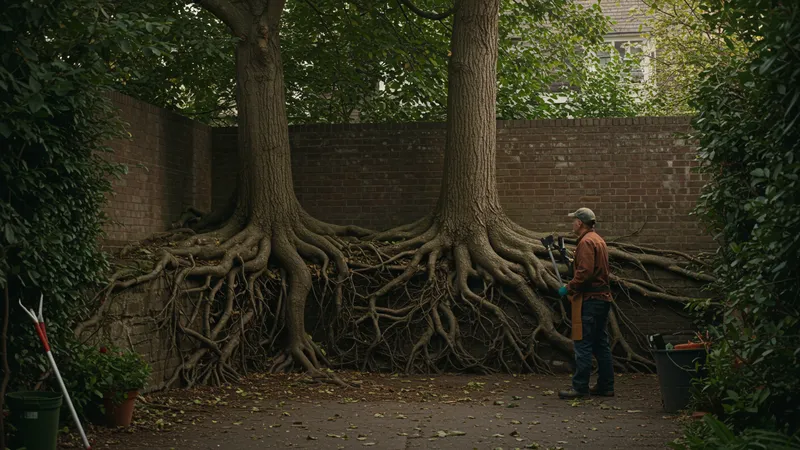
Poorly timed pruning, for instance, can strip a tree of necessary nutrients, pushing roots to seek out nutrients more aggressively and using structural surfaces as pathways. The phenomenon is a classic tale of nature rebelling against undue intervention. Doesn’t this surprise you with the trees’ resilience and adaptability?
Moreover, amateur landscape experiments without professional guidance often result in unintended root chokes where two or more species inadvertently suffocate each other. This creates a battlefield underneath the soil, killing some trees while making the surviving roots expand unpredictably. Is this leafy warfare a hidden bottleneck in garden planning?
Enhanced vigilance and understanding are pivotal. As more people share their cautionary tales, planners are now approaching tree maintenance with enhanced respect for trees’ biological processes. Learning from these mistakes, couldn’t we pave a well-informed path toward harmonious horticulture?
In the financial playing field, the risk of tree root damage introduces numerous economic considerations. The cost of remedying foundation issues caused by tree roots can rise exponentially if left ignored, often blindsiding unprepared homeowners. But there’s a broader context regarding preventive investments—do these costs ultimately pay off?
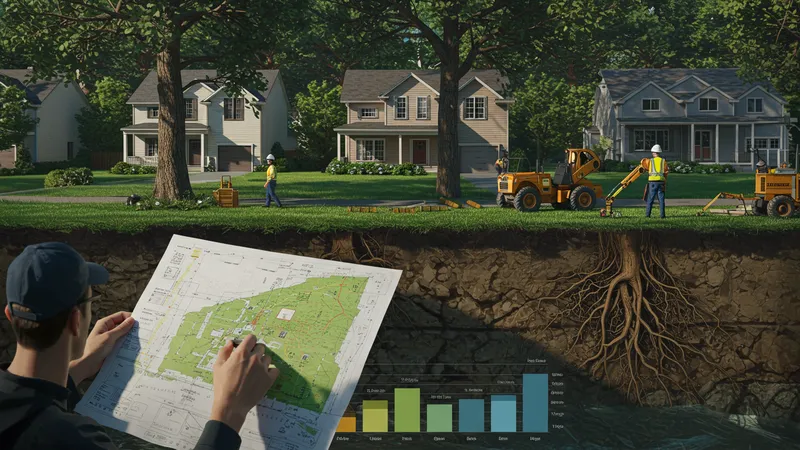
Interestingly, some homeowners have calculated that investing in preventative measures, like regular root mapping and trenching barriers, yields substantial savings compared to emergency repairs. It becomes clearer through case studies that proactive management not only protects properties but also boosts their overall market value. Could these preventative investments shift economic priorities?
The economics extend to community development on larger scales too. Cities and towns are increasingly prioritizing green infrastructure development, allocating funds to create harmonious blends of urban and natural spaces. As these spaces thrive, so too does the local economy, fueled by eco-tourism and improved quality of life. Does greenery reassure community prosperity?
Financial foresight is indeed the forefront of savvy real estate investments. Those who value sustainability may find that each dollar spent on tree-aware landscaping today reaps unmatched rewards tomorrow. Isn’t this perhaps the ultimate economic equilibrium—a landscape where ecology and economy bloom in tandem?
The world is abundant in stories of tree root damage—from comical mishaps to devastating financial downfalls. Consider the tale of a municipal park in the heart of a bustling city, where giant roots gradually lifted a series of bench-lined walkways. Instead of uprooting trees, city planners integrated the raised paths into a scenic boardwalk, transforming a problem into a tourist attraction. Can genius come from embracing natural growth?

Conversely, some personal stories aren’t as picturesque. A Californian homeowner who ignored creeping root issues for years ended up with a cavernous basement crack during a freak storm. Insurance didn’t cover the fix, costing a small fortune, and turning a lovely exterior into a logistical nightmare. But just like storms, there’s calm after the cleanup—is there room for optimism?
Grassroots movements have inspired community tree-watch groups who work to ensure proactive tree health and mitigate potential hazards. These groups have been successful in identification and preservation, redeeming distressed trees and fostering neighborly relationships. There's beauty and bond when nature serves as a rallying cause, don’t you think?
In examining both soaring successes and sobering failures, one thing is clear: tree root challenges are universal, but so are the solutions. With diverse approaches available, isn’t it time to act on what nature’s narratives have taught us?
Incredible opportunities await those daring enough to take root challenges as inspiration for unique solutions. Why waste nature’s power when we can harness it instead? It’s an exciting time for all—real estate innovators, gardeners, and homeowners who see potential in what others view as problems. How does one unlock this botanical potential?

Some landscaping ventures have transformed roots into artistic elements, designing avant-garde root fences and picturesque root-flow ponds. Engineers are devising eco-friendly floorings using hard-pressed root plyboards, creating a symbiosis that naturally occurs beneath our feet. Isn’t turning tumultuous terrain into opportunities quite the audacity?
Root therapy gardens utilize aerial root prunings, transforming backyards into ethereal sanctums that promote wellness and ecological education. This burgeoning trend is not only charting new territory in backyard transformations but helps individuals reconnect with the blessings of nature. It’s evident: roots are sprouting new paths for the imaginative. Could you imagine your home’s future transformation in this green venture?
These creative solutions demonstrate the possibilities open to those willing to live in concert with nature’s vitality. Embracing the chaos beneath, we can build not just homes but meaningful legacies that reflect human ingenuity shaped by the very roots that first sustained our habitat. Isn't embracing roots very roots of change?
Tree root management is as precise as conducting an orchestra—one must balance growth with maintenance. Certified arborists emphasize strategic planting, advising a minimum distance of two feet per inch of trunk diameter to sidestep interference with underground utilities. This simple rule can avert the most common root pitfalls. Can you begin measuring your tree’s growth?
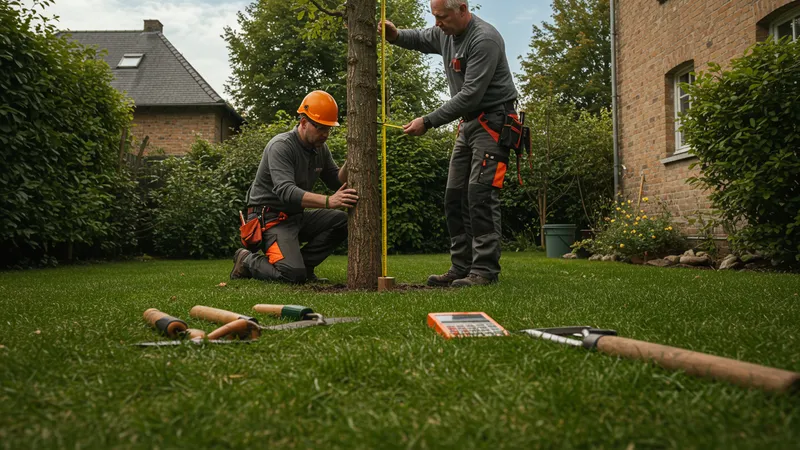
On the maintenance front, routine inspections by professionals can help catch cascading problems before they become disasters. As a standard precaution, regular checks every two years can mitigate unforeseen issues. It’s the assurance every homeowner desires—root risk assessment at your service. Are you equipped to seek out such peace of mind?
In practical terms, proper root pruning is paramount, but it’s all about timing—too much too quickly can debilitate a tree. Licensed experts blend knowledge with precision when trimming roots to ensure that trees stay robust while your home stays protected. Have you considered stepping up your tree-care regime?
Knowledge and action need to work in tandem. But it’s this harmony between recognizing potential roots of structural discord and maintaining your beloved verdant giants that reaps the best living experience. Welcome to the world of seasoned eco-caretakers!
As we stand at the crossroads of nature’s bounty and architectural ambition, the ever-prevalent existence of trees in domestic spaces demands our attention. By accepting this leafy challenge, we embrace the wisdom in designing harmonious, eco-friendly environments. Responsible stewardship is vital as more structures emerge around us. Are we ready to listen to the whispers of our own backyards?
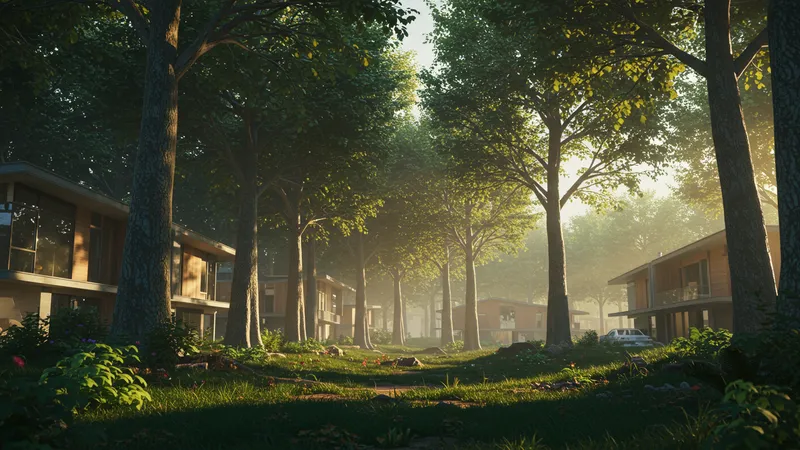
Our journey through the maze of tree root damage has drawn lines of understanding, learning, and foresight. From advanced technologies to simple awareness practices, we can shape safe, sustainable spaces that allow both trees and homes to flourish. Isn’t it our duty to craft a world of coexistence for future generations?
In this convergence of past mistakes and future possibilities, the lessons we carry forward are as deeply rooted as the willows we protect. Let your home and its surroundings tell a tale of unity between human realms and the natural world. What will you commit to, so that today’s roots nurture tomorrow’s legacy?
If this story of roots and resilience has piqued your curiosity or sparked inspiration, consider sharing it with those who may benefit from these insights. Keep it bookmarked for future reference or community discussion on inventive, eco-conscious housing solutions. Engage with the future of living—it’s one that grows beautifully, with robust roots attuned to harmony.